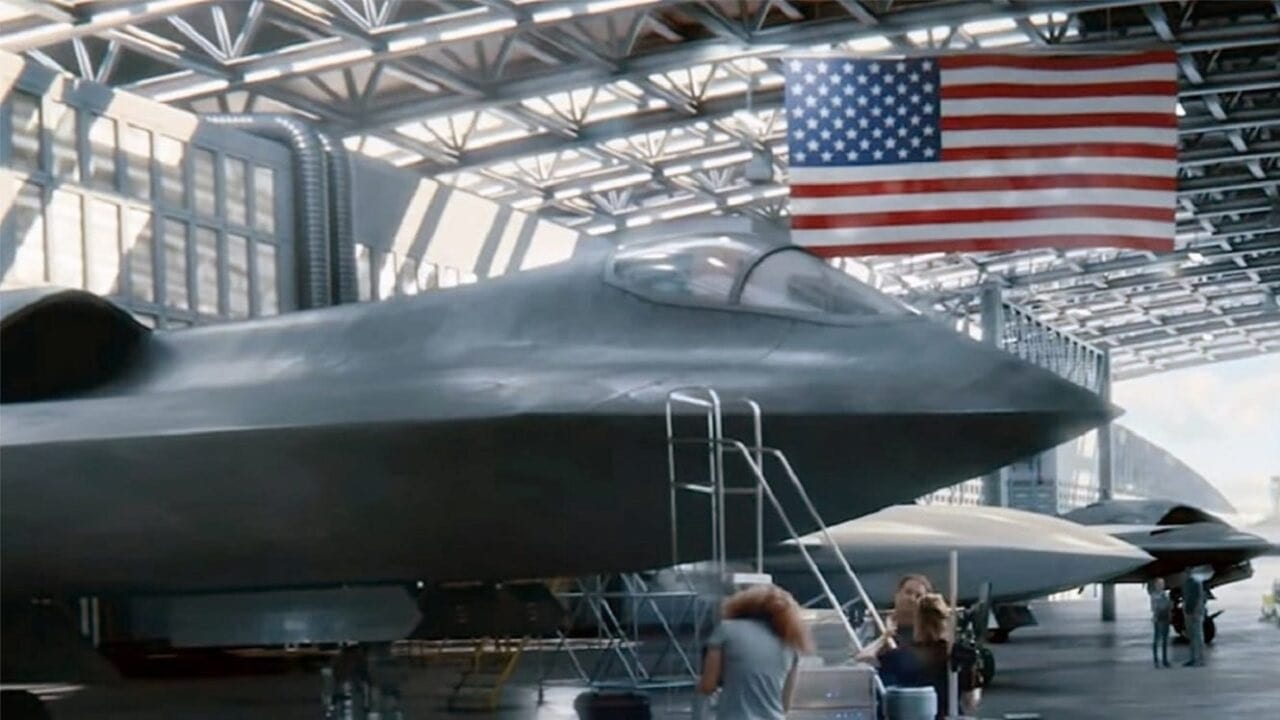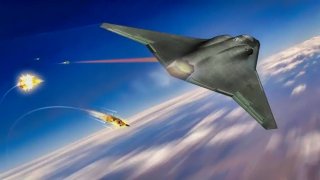NGAD: Could the New 6th Generation Stealth Fighter Be Too Expensive?
Even if the manned aircraft component of the NGAD program costs upwards of $300 million, it could be worth every penny.
Is the NGAD Too Expensive? Unmanned Drones Could Help Address the Issue In April 2022, Air Force Secretary Frank Kendall told members of Congress that the manned fighter that would form the centerpiece of the United States Air Force's Next Generation Air Dominance (NGAD) program would cost hundreds of millions of dollars per plane.
In other words, the NGAD could be double the price of the Lockheed Martin F-35 Lightning II, which costs around $80 million per aircraft. The NGAD would still cost more than the F-22 Raptor's $135 million price tag – a factor that led to the program being cut short nearly 20 years ago
The NGAD is Worth the Cost?
Even if the manned aircraft component of the NGAD program costs upwards of $300 million, it could be worth every penny.
As Alex Hollings wrote in October, "There's no denying that Uncle Sam has an affinity for expensive military platforms, with today’s F-35 Lightning II effort currently holding the title for most expensive military program in history at an estimated $1.7 trillion over the jet's service life… But it's important to remember that the F-35’' price has come down dramatically thanks to the fact that a whopping 17 countries have placed orders for the advanced fighter and more than 1,000 F-35s have already been delivered to customers. In other words, despite a high operating cost, the F-35 has become one of the most widely operated fighters on the planet, and high volume has a way of bringing down costs."
Furthermore, the Department of the Air Force intends to purchase just 200 or so fighters from the Next Generation Air Dominance program, with these next-generation jets expected to fly alongside another 300 advanced new Block 4 F-35s and at least 1,000 artificial intelligence-enabled drone wingmen.
More Than a Single Aircraft
That latter fact is important to note as the NGAD is more than a single aircraft. It is actually a system of systems that will include an "optionally manned" sixth-generation multirole fighter – which will replace the Lockheed Martin F-22 Raptor – along with unmanned Collaborative Combat Aircraft (CCA) also previously known as Loyal Wingmen.
The United States Department (DoD) has remained committed to the responsible development and employment of AI, even as some critics of the technology have warned that it could pose dangers to friend and foe alike. The U.S. military has sought to ensure that the technology will be used according to the accepted rules of engagement and that it could be employed to keep U.S. service members – including pilots – out of harm's way.
"AI will be a critical element to future warfighting and the speed at which we’re going to have to understand the operational picture and make decisions," said Brig. Gen. Scott Cain, AFRL commander. "AI, Autonomous Operations, and Human-Machine Teaming continue to evolve at an unprecedented pace and we need the coordinated efforts of our government, academia and industry partners to keep pace.”
Thousands of Drones to Support the NGAD Manned Aircraft
The XQ-58A Valkyrie, which can reportedly reach speeds of up to 550 mph, is just one potential contender for the NGAD program, and later this year, it will be tested in a simulation to chase and destroy a target over the Gulf of Mexico.

A loyal wingman could be especially attractive to the U.S. Air Force as the service has in recent decades built fewer and fewer manned aircraft, including the F-35 Lightning II. That has left the service with a significantly smaller fleet – not to mention many older aircraft, like the B-52 bombers that are older than the parents (and in many cases the grandparents) of the current generation of aircrews.
The Air Force has plans to build 1,000 to 2,000 of the CCA, for as little as $3 million apiece while more advanced variants could be $25 million, according to a recent report from The New York Times. Even at the high end that is just a fraction of the cost of today's advanced aircraft like the F-35. Some in the Air Force have already described the program as "affordable mass."
The unmanned aircraft could help address another problem faced by the Air Force – namely its pilot shortage. The service has been forced to offer bonuses of up to $600,000 in total to keep its pilots in the cockpits. The NGAD's unmanned systems could thus be a force multiplier while solving the pilot shortage.
The drones could further enhance the capabilities of the manned fighter because the CCA likely won't be multirole aircraft like the F-35 however, and instead could be more specialized to particular roles. That could include surveillance while others could be geared towards resupply missions. Some could fly in attack swarms to overwhelm an enemy, while there will also be those true "loyal wingmen" that protect a manned aircraft – and which are willing and able to take a bullet or more likely an anti-aircraft missile for their human.
At $3 million each, the CCA would be a bargain compared to the manned fighter, and truly make the program worth every penny.
Author Experience and Expertise
Peter Suciu is a Michigan-based writer. He has contributed to more than four dozen magazines, newspapers, and websites with over 3,200 published pieces over a twenty-year career in journalism. He regularly writes about military hardware, firearms history, cybersecurity, politics, and international affairs. Peter is also a Contributing Writer for Forbes and Clearance Jobs. You can follow him on Twitter: @PeterSuciu.
Image Credit: Creative Commons.


